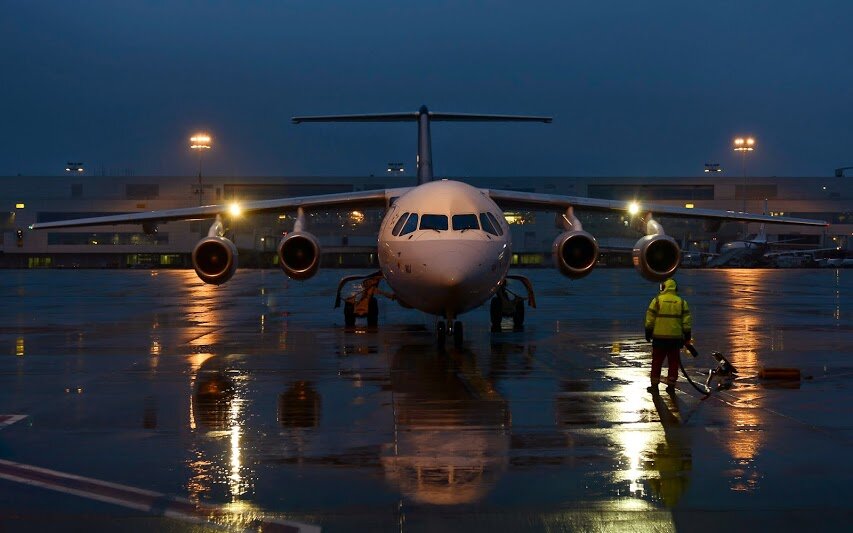Published Articles

Recruiting for Airport Diversity: Challenging Requirements
No business, including airports, operates in a vacuum. The environment in which each of us works is constantly changing. Competitive tension, evolving customer requirements and the ever-present stockholder expectations of growth and increased profit. This all comes together to put pressure on airport managers to do more with their limited resources, including people.
Then why would we limit ourselves to only a portion of humanity when it comes to building our teams?
What are generally considered the benefits of having a diverse workforce were outlined in my earlier article but actually getting a diverse workforce was only touched on in the diversity post. So let’s take a deeper look at recruitment and selection.

Airport Workforce Development is Hotter Than Ever
Some time back, I wrote Airports Compete for New Talent about the challenges presented to today’s airport industry by the continuing need to attract, retain and develop airport talent.
Whereas most people think the biggest airport challenge is security or air service (important, of course), what really occupies the minds and conversations of airport executives is meeting this challenge. As Dan Parsons said in the first of his excellent three article series, “At some point, the job (of airport executive) becomes less about technical expertise and more about leading people.”
The question has become, where are those people coming from? Why are they different than what I am used to? And, how do I deal with all this? THOSE are the questions I most hear airport leaders discussing in the bars and restaurants – places where they can feel free to talk about any subject on their minds.
As I wrote back then, this was once an industry in which most talent came through certain pipelines and tended to stay through their careers. All of that has been upended. Many of those pipelines exist, certain schools still have good programs, and many people still obtain certain certifications. But the overall picture is uncertain and unsure.

Airport People Power: Diversity
This is part three of a series where I explore concepts associated with people management, inspired by Greg Principato's post on the key concern of airport executives: people. Part one is on discipline and part two on development.
So far, we’ve discussed people management techniques that apply to your current workforce. This article relates more to building or replenishing your team in a way that should see its output increase. It is also a relatively controversial concept.
The reasons why workforce diversity is still a “special interest” activity rather than part of our “day to day” varies. It is likely to be a combination of poorly implemented corporate policy, fearful entrenched management and, even cultural prejudice (be it racism, sexism, agism, etc.). It might also be because diversity interventions can conflict with a person’s morals and values.

Airport People Power: Development
This is part two of a series where I explore concepts associated with people management, inspired by Greg Principato's post on the key concern of airport executives: people. The first article in the series looked at discipline.
There seem to be a million internet memes on developing your staff with the “what if we don’t and they stay” posting on LinkedIn on a seemingly four-week cycle. So, it seems almost needless to discuss why we need to invest in our teams but we will, briefly, and then will move into some ideas on development that won’t break the bank.

Airport People Power: Discipline
This is part one of a three part series on approaches to airport people power inspired by Greg Principato's post on a key concern of airport executives: people.
At some point in the careers of most airport managers, the job becomes less about technical expertise and more about leading people. There are plenty of books on leadership, business and management by more eloquent, intelligent and talented people than this author. But in recently building a new airport team and operating model in a challenging regional airport environment, three areas of focus came to the fore.
The first of these is operating discipline. This area is, by far, the most foundational. It takes significant work to set up but it has a long lasting effect.

Airports Compete for New Talent
When folks find out I was President of Airports Council North America (ACI-NA) for eight years, I tend to get a lot of questions. Depending on who I am talking to, the first questions are often about whether I get free flights or parking or food (parking is a big one, everyone thinks free parking would be the coolest perk, but alas!).
After the frivolous subjects are dealt with, people always want to know more about what happens behind the scenes. And the more people learn, the more they want to know what kind of person it takes to run such an operation, both at the CEO and the operational levels. The more we talk, the more often I hear the same thing: "What an unusual combination of capabilities these people must have. Where do you find them?"
